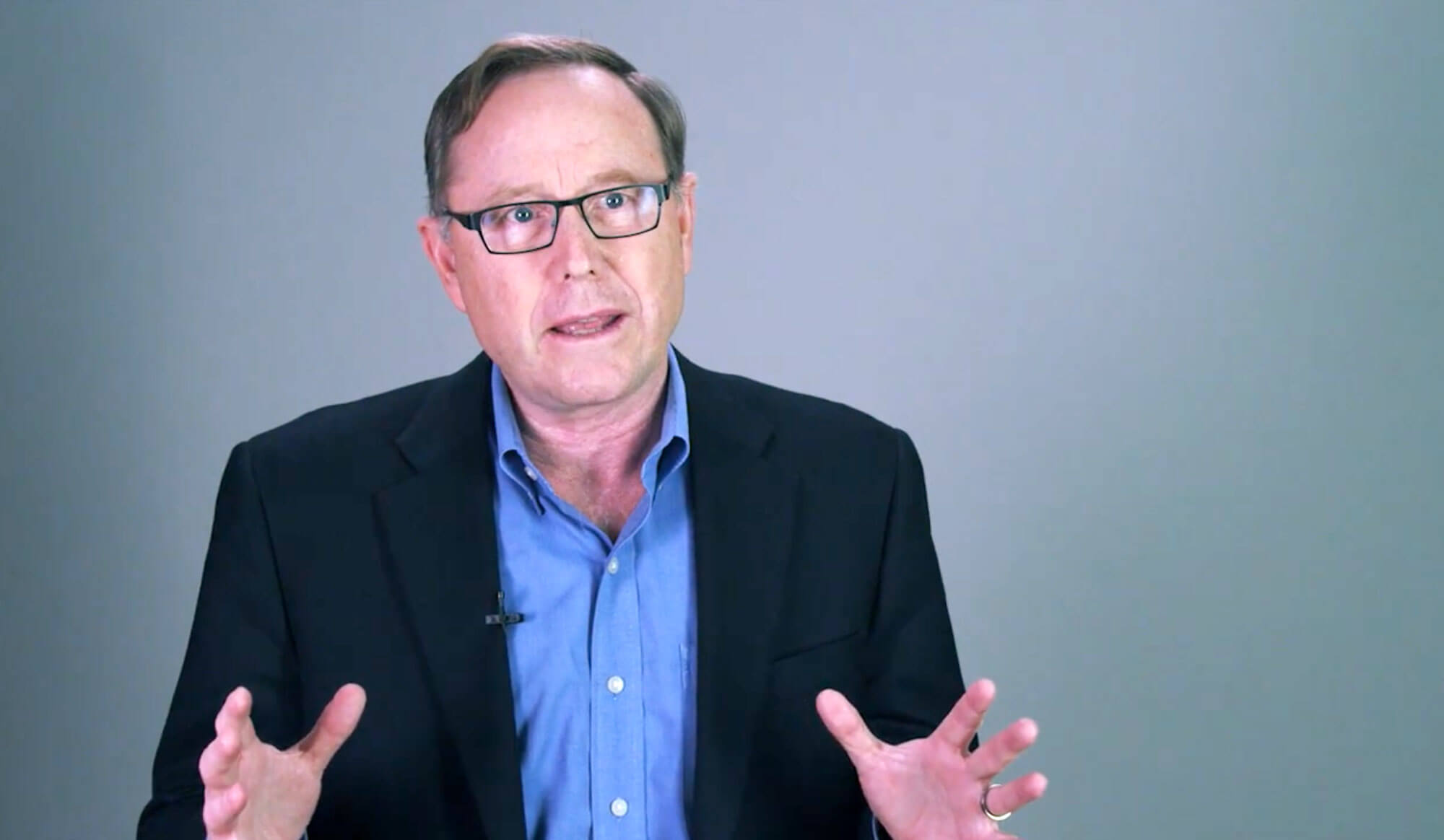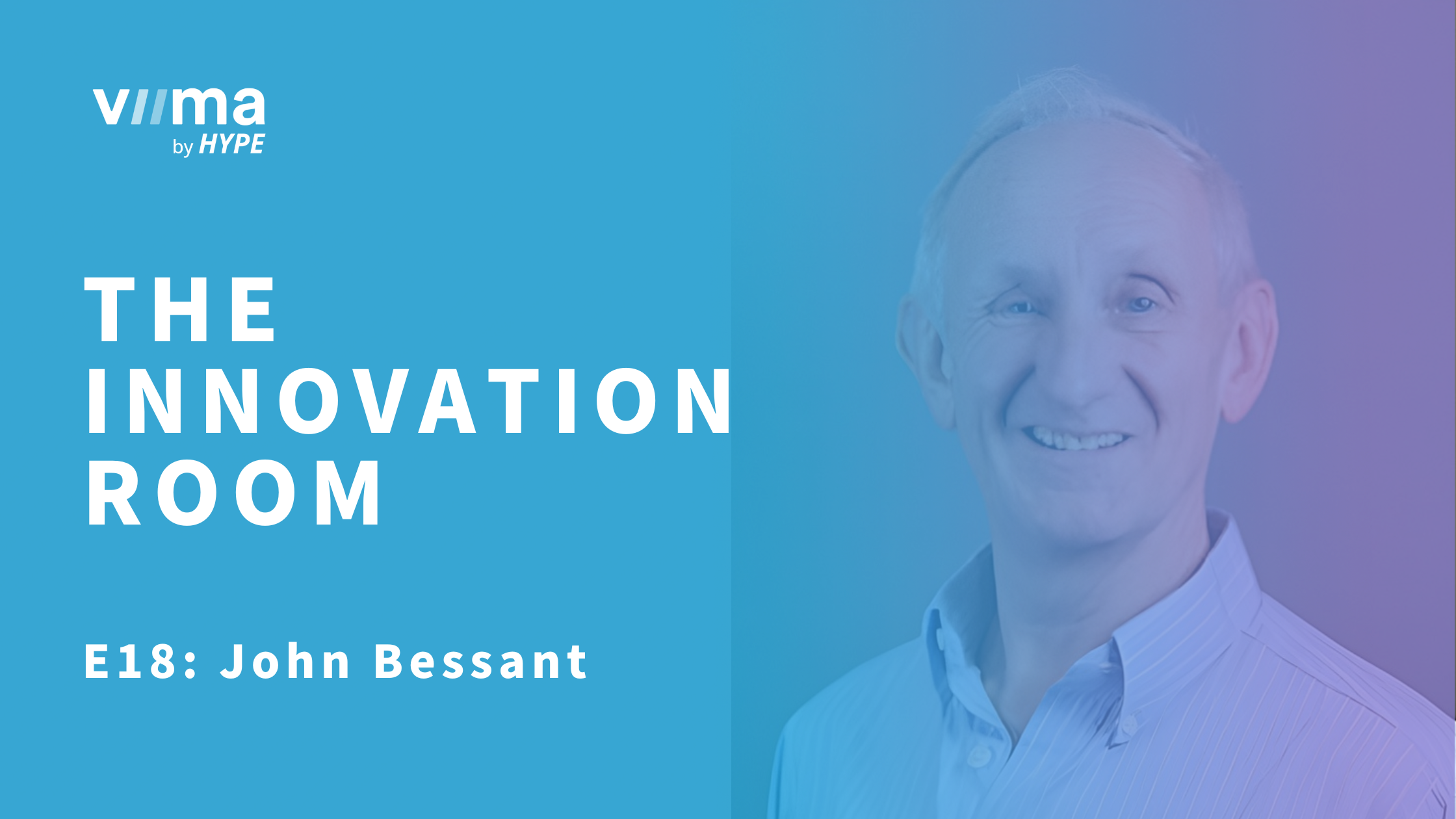Debunking Open Innovation Myths with Oana Maria Pop
We are back with yet another Innovation Room Podcast episode.
Today, Oana-Maria Pop shares her thoughts on fears that arise from all the myths and misconceptions shrouding open innovation.
Oana-Maria has over a decade of experience in the innovation field. Currently, she is the Head of Open Innovation at Hype Innovation, engaging in consulting and training, and supporting marketing activities. Her focus is on helping large, complex organizations set, vet and execute open innovation goals.
Table of contents
Today we'll be talking about open innovation, but it would be good to start with an introduction. Could you tell us about yourself, your professional background, and your work in academia?
Oana: The best way to do it, is by using an analogy related to hats. I could explain the kinds of hats that I am wearing. The first one has to do with consulting. I'm a specialist in running open innovation programs and you could see that as an exercise in helping people to imagine where they want to expand their business, or how they want to perfect things. Of course, this is all related to external engagement and that's the primary thing that I do (at Hype).
Second – I am engaged in marketing; it is also part of my background and it’s something I really love to do. I participate in events, I am a guest on different podcasts, and I go to fairs with my colleagues. Generally, I help to run so-called internal research projects, which is very interesting to me – I keep my marketing hat when identifying patterns, for instance, what are people up to, and what are they talking about, and then I extract that knowledge.
And it all feeds a little bit into the third hat, which has to do with new product development. I take almost everything that I hear, and I try to transform it into some insights that are useful for my colleagues. For example, when we're developing something new, let’s say for ideation or for partnering, we would have intense discussions about what I actually see in the field.
So, those are the three things that I do. In addition, there is an academic component to it all. I still write teaching cases, and I still do some research, but it's mostly during the weekend, I'm not an active researcher anymore. But it is a part of my past and that's how I got into open innovation – through a theoretical side and then I gravitated towards practice. And these two sides really complement one another.
So, you are the expert on open innovation and I'm ready to dive deeper into the questions. What would you say are some of the most common challenges that companies face when they try to implement open innovation?
Oana: There are many and I'm sure that a lot of them I'm not even aware of. But what I see from my vantage point is an inability to professionalize things.
Everyone and I really do mean everyone you know – from kindergartens to the European Space Agency – engage externally in some shape or form. This is not the Biosphere 2 project in Arizona, we're not cut off, we have Internet. So, inevitably we have lots of contacts.
Everyone – from kindergartens to the European Space Agency – engages externally in some shape or form.
Yet what happens is that people don't use those contacts very well, or they think that things are extremely difficult to implement, thinking that they need to be the next Wikipedia or IMDb, or the Linux Foundation by gathering lots of users. That's really not what open innovation is about.
Organizations imagine scenarios that are a bit blown out of proportion and therefore they stop before even starting. Even when they do start, they fail to document what they do along the way, so there is really an overall lack of professionalization.
In addition, they might fail to monetize. For instance, when they do get started, they get past that initial hurdle, but they fail to monetize, they fail to put open innovation in the hands of relevant people – maybe they are very closed, and they only keep it within the venturing unit or within the marketing. But this makes them unable to properly react to new signals in the market, so they're not really informed, they're not aware of what's going on and they miss out.
I think these are the common things that happen. By large, there is some kind of fear of going ahead and of trying this mode of working even though it's highly popular and there are millions of hits on Google for the framework. So, it is established but it's not at the level at which it could be in terms of application.
There are a lot of misconceptions and myths surrounding open innovation, which in my opinion fuels said fears. Do you encounter such misconceptions in your line of work?
Oana: I don't think there's ever a day without something like it popping up. And just like with any challenges, there are different flavors to this too.
For example, one main misconception is that open innovation must be good, but for someone else and not me. It's a bit like eating healthy – I should eat avocados, but I'll let someone who is more inclined to eat fruits and vegetables do it. Organizations just don’t see it applicable to them.
Then there's one myth about the process. People say that we might open it up and we might organize it, but how on earth will we close it? What happens at the end? We turn on the tap, but we end up drinking out of a fire hose for the rest of that engagement. It is a very big fear. People are afraid that they cannot properly wrap things up. Which is a legitimate fear, by the way.
There are also intellectual property (IP) questions. What happens to the data? How do we handle users’ privacy? Of course, that's a big deal, but we have the GDPR framework and agreements in Europe, which really transformed how businesses work and relate to their end users.
In addition to that, there are other fears, for example, that it's impossible among rivals, that the technological singularity will take over, and by doing that it will also take over open innovation. There’s a belief that AI steps in and we won't even need to generate any new ideas anymore, because everything's already been done and generated, so why should I collaborate when I just have to find things?
But people forget that they work with other people, so this is not just a question of finding things out there. This is a question of solving problems. You cannot solve problems that relate to you as a person unless you work with other people.
This is not a question of finding things. This is a question of solving problems and you cannot solve problems that relate to you as a person unless you work with other people.
The first misconception you mentioned is the narrow view to open innovation, that it is only applicable to certain businesses, certain industries. Why do you think people think of it that way?
Oana: In my opinion, this comes from a sort of exclusivity. Some organizations believe that open innovation is meant only for organizations that have prepared in a certain way or for large corporations making billions of turnovers to be able to afford open innovation. There's a dimension of organizing and there's a dimension of risk-taking.
Of course, there is some truth to it – in every myth, there is a grain of truth, and it doesn't come out of the blue. But people don't realize that the industries that could benefit the most from open innovation are the industries that serve lots of people. We might not think about them because we always think about Apple or Google, about technology companies. Yes, IT and pharmaceutical or biotechnology are where open innovation has its roots, but it is not limited to.
If you think of municipalities, governments, NGOs, or universities these types of organizations are huge beneficiaries of open innovation. Imagine if you invite your staff, your researchers, and your students to participate in an engagement to figure out the strategy for your university. This is what our customer, UCSD (University of California San Diego) has done.
It's incredible to see how those opinions can actually funnel into something new and interesting. There's tremendous potential in leveraging those voices. Not all of them are relevant at every single moment in time but you can extract best practices and you can make sure that the actions that you take are in line with people's thinking, that they're on board with you from the start.
If there's something that needs to be built in a city, there's always some kind of consultation taking place. People don't realize that that is open innovation. Of course, if you only send out a questionnaire that's not a lot but if you involve people in the execution – that already makes them part of the journey.
Another interesting example is a case we had with Sydney Waters Australia. They wanted to improve their city’s swimmability and it was an effective open innovation engagement.
And well, you're very lucky Dainora because you live in a Nordic country, well-known for having a democratic attitude – and that's why I mentioned these entities as primary beneficiaries of open innovation. If I cater to thousands, maybe millions of people in my municipality or if they have some kind of connection to services I provide, of course, their opinion could feed into my innovation work, into the way in which I create new products and services. But clearly, that is not the only part and unfortunately, I don't even work that much with municipalities, governments, or universities. It is a growing area, but it's not there yet.

However, I do work with large corporates and that’s where you have very traditional industries that need transformation. Those can also be huge beneficiaries of working externally or involving their external stakeholders. Paints and coatings for instance, or while you could say medicine is very modern, delivery of health care is not as modern as we would like to think, at least not everywhere. So, these industries could also benefit from lots of infusion of new things.
Or for example air travel – you probably know the lifespan of an aircraft (around 30 years). There's always room for something new, if you could speed things up by one year if normally development takes 10 – that's a huge gain, that's 10%. Every input could potentially be important and that's why it's worth considering how external opinions, for example, of your suppliers, could feed into a new product development cycle.
There are really lots of beneficiaries and this myth of exclusivity – I hope people erase it from their minds. Even a car dealership could find a way to work effectively and strategically with people that supply it. I think imagination is the only limit here.
I wish that more people knew about structures and use cases. And I hope that academics who are listening to this will write many more case studies that explain how open innovation frameworks do apply to a variety of industries.
Is open innovation applicable to small and/or medium size organizations? Smaller than big corporations, municipalities, universities, and such?
Oana: It is probably not obvious, but we always talk about the corporates because they're usually the initiators of open innovation engagement. Siemens opens a platform, and they take in proposals from their suppliers or BMW does a supplier-athon.
So, in this case, SMEs are the contributors. They are the innovators in this equation. Of course, they do open innovation, but their participation is how they really get engaged. I would advise teams below 50 to look for those opportunities. I know they do so already, they look for hackathons and they look for chances to co-brand a product with a larger investor.
Those are routes to open innovation, but I'm sure they can also apply open innovation principles in their day-to-day. It is also about flexibility or looking internally for things that you apply externally.
Let's say that I've been trying to monetize an idea that I have, and I just cannot do it alone. I don't have enough resources, so I do a crowdfunding campaign, that's also a form of open innovation. I would really encourage SMEs to just look at how they could valorize unused assets or something that's been sitting on the shelf for a long time, is there a chance to partner with someone, to send an EU application?
We work a lot with EIT Food, so you have the agripreneurs, whose main preoccupation is to look for these opportunities. They're trying to be part of a consortium so they can really work on the topics at which they're good.
Small companies can be a very important cog in this bigger machinery and sometimes the large company is not even the most important partner.
Sometimes it could be a community of smaller companies that are the major pillar in an open innovation engagement. It's very interesting and I don't think they should feel disempowered or overpowered at all.
At the start, when you were talking about all the myths and misconceptions, you mentioned the fear and confusion surrounding the last chapter of open innovation – ending and closing it. Where and why does the uncertainty arise?
Oana: It is a little bit like opening a can of worms, it is a controversial topic.
I think that people are afraid that open innovation cannot be closed because it is (and this is often the truth) a public engagement. You put up a poster, there's a call for ideas, I go online, and I prepare a gallery. I make public the fact that I don't know everything, that I need to know more about a topic and I'm looking for help. That can be perceived in a negative way sometimes by organizations.
Of course, today we have the right to be forgotten on the Internet, you can delete and take down a website. From a technical perspective, there are solutions, but people are a bit afraid that they might damage their brand if open innovation doesn't result in that stellar contribution if the next best thing since sliced bread is not invented on their premises.
People have very high expectations from these kinds of engagements but what really happens is that most of the engagements are temporary by design. There is a workflow, and we start at a certain point in time, and we end at a certain point in time. There is a planned closure for all open innovation engagements. We were talking about crowdfunding and hackathons – they have deadlines.
I think what people need to focus on instead, is the learning cycle. Plan for this conclusion deliberately. You can also stop along the way and maybe reframe the topic if you don’t find what you're supposed to be finding.
At the same time, people think that they cannot close open innovation because there’s too much information coming from it. But that is precisely why you should set these boundaries and limits because you have to absorb that knowledge. That's an aspect that is a bit overlooked. We focus on the fuzzy front end, on the poster, on the hackathon day, on the campaign, and so forth. We forget that further down the line our employees have to go in and they have to work with that data. And why on earth would we want so much backlog anyway!
Yes, it can, and it should be closed. And that's not bad news. There are many reasons why something is closed in the first place, it's not only deadlines or the fact that we allocate a finite period of time. But it could also be that it literally does not work out, we don't meet the expectations of the partner that we're working with, or we make a shift from value creation to value capture. We gather data, we analyze it and then we try to implement it, so of course we stop taking in new knowledge.
A good example is Les Mills in New Zealand. They had a very long-standing collaboration with Reebok, and this was in innovation, not just branding. They developed workouts together and products. But now Les Mills shifted to Adidas, and I wondered, why would they do that. It seemed like a really solid relationship. Yet they closed their initial open innovation engagement because the strategy changed. Les Mills focuses now more on virtual reality and on other capabilities and they made the shift.

So, the reason for the shift doesn't need to be bad, it doesn't need to be scary. Maybe that's something for our listeners to keep in mind too. The planned closure is something natural. The only issue with that is when have a joint technology with other partners. That's, of course, a little bit more difficult to disentangle. But a good way to hedge against that risk is to create an agreement that mentions what happens when one of the partners leaves the collaboration – will they still have access to the pool of jointly created products or services? Or maybe there's IP involved and things like that.
It is a little bit like a prenuptial agreement. That's exactly what is reciprocated in practice, and I think it's very healthy.
Fears related to IP are grounded in real risks. Are they blown out of proportion? What can companies do to minimize IP-related risks?
Oana: I think companies blow it out of proportion because they perceive it as a compromise or as a need to sacrifice themselves for a potential collaboration that might not even work out in the end. Everyone's afraid of loss, we don't like to lose, we like to gain. So, I think there is a very strong psychological component involved in that.
If we take a moment and we contrast an internal innovation scenario with an external one, we'll quickly figure out why this is. Internally you can control lots of things. You have all the mailing lists, you have a contractual relationship with all your employees, you have a clear mission and vision, and you know the target you are after. But the minute you open up, there are lots of third parties coming in and the complexity level rises dramatically. We cannot fully control what they do. They come in, read things on our website, make interpretations, and send us suggestions as to what we could do better. And again, there needs to be a frame around that.
If you have never talked about IP before in your organization, if you have failed to involve your legal specialists, if you fail to tell them that you're doing an open innovation engagement, then it's probably doomed to fail. You need to organize, and you need to have a document that explains what happens to that knowledge, as that's where the problem arises – ownership.
We had the privilege of seeing an open innovation engagement in a country where digital literacy was extremely low, we helped to run a hackathon in Togo during the Covid-19 pandemic.
One of the unexpected things that happened is that people started copying each other’s submissions without any consent or warning. And these were health apps. So, for the end user, for people who would use the app this is great news because all of a sudden, the app proliferated. But for the inventor, this was highly problematic. I don't know if that person is willing to ever participate in a hackathon again. But it happened because there were no clear boundaries set and because the people copying were not aware that this was a problem.
So, there’s an educational aspect too that concerns the organization that is initiating open innovation but very much also the participants. That's why we always want to have terms and conditions when someone participates in our innovation day, or if they log into our system and they submit data. This way you can protect your assets and you can make sure that you're not using assets that you're not supposed to be using.
One example that I really like is from BMW. BMW has two distinct routes for every submission that comes in through its system. On the one hand, they ask you if there is anything patent relevant and if you check that box it takes you to one route. This way you enter a discussion with a relevant specialist; if not – there's another route that takes you into more of a community space where you can see other submissions and you're exposed to a different set of specialists.
If people would just ask a couple of very sensible questions, I don't think this issue would even exist. And you don't need to set up a 20-page description. All you need is to know who owns the IP, and how will the revenues be split, if you want to commercialize something together, you need to know who will manage the assets, if there is a patent involved – who will pay for it. Finally, how you will manage the invention disclosure process? It’s not just BMW that does it, there are many other organizations with similar approaches, for instance, Mattel has an inventory relation program.
The process will change over time, if we just make sure that we know who is supposed to tweak it and when it's time to tweak it, that is already a major step forward. And honestly, these issues usually emerge when there's something valuable in the pipeline when there's something promising that everyone wants to grab at the same time.
But we can plan for them and thankfully there's so much infrastructure available right now. I think we're very adequately prepared we just need to put this into action.
Are there any benefits in collaborating with your competitors in open innovation?
We often talk about the term ecosystem, and it is true that the way to characterize our economy and the way in which we relate to each other in the business world is through the ecosystem lens. It's a bit of eat or be eaten, nothing is ever lost, everything is transformed. And someone’s losses are someone else's benefits.
There are circumstances in which collaborating with your competitors could work and these circumstances could be the wicked problems that we're trying to battle nowadays. We all know that we're consuming far more Earth than we have. So, in line with that kind of work, I think it is sensible to expect companies doing the exact same thing to come together, maybe temporarily, to help advance the industry. The trouble is that if work is concentrated in different pockets, then we're not advancing as far as we could as everybody is minding their own perimeter and are not exchanging know-how.
If we work concentrated in different pockets, then we're not advancing as far as we could, we are not exchanging know-how to tackle wicked problems.
You might think that a company doesn't want to work with its customers. But companies like TetraPak do something very interesting. They offer a service whereby you can hire their team members to teach you about innovation or to teach you about topics that are of common interest. There is some kind of mechanism of upscaling all those that we have around us, even competitors because the idea behind it is that we would move much faster if we were coming up to speed.
This is very true of developing countries. Sometimes a mature organization in one space will go to its peer in a less developed country to help upskill them. By doing that they would also prepare the ground for additional services that they might be developing. It's an interesting, deliberate step that you might want to take.

For example, one media company had set up a very effective way of doing corporate venturing. What they did is that they tried to teach that model to other organizations that were working in the exact same industry but in different geographies. They ended up creating a nice consortium whereby they were sharing best practices and mentioning what works and what doesn't with that exact framework in the locations at which they operate and that is extremely valuable.
It's a bit like the educational system. You have a schooling system that you're trying to apply in other areas. You could say that another school is your rival because you could just open another campus in a different country. But why not empower that partner to work using your methodology, maybe that's more powerful for you from a branding perspective.
We organized ReImagining fundraising, and we had 14 international NGOs taking part. Imagine the Greenpeace, UNICEF, SOS Children's Villages and the World Food Program, and so on. They are also competing for the same slice of the pie and it's our donations. But they realized that they cannot keep up with the technological development so they're better off creating a pool of startups that they can then leverage, they can even prototype jointly with that same startup to make sure that the solution is effective for the use case that they're dealing with.
There is a bit of letting go of egos and a bit of realizing that we move faster, we can achieve our goals better and we serve our end users much more effectively if we try to engage in scenarios that also involve our rivals.
In the end, there’s this whole question about who is your rival, who is your competitor? I'm sure that the taxis didn't really predict Uber or car-hailing services to be their main competitors, hotels did not see Airbnb as one either.
You're better off experimenting with different things and then seeing where that leads you. Even with rivals.
How does AI affect open innovation? Is it a threat?
Oana: In my view, it is a threat, but I don't think it's a threat that should paralyze us. Tools like ChatGPT are great at summarizing things. You can ask it to be very concise, to give you options, and so on. There are lots of things that serve similar purposes and that we have already been using, but we haven't called it ChatGPT we called it something else. I used to use Grammarly for instance or Author to transcribe notes when I was doing qualitative research. Those are also AI tools that can assist us.
I think a less scary way to think about these tools is exactly that they're here to augment our work. I don't think they could ever replace the judgment of a human. Here we go back to the issue that when you're solving problems you're working with other humans and not technology. AI is the intermediary but you're helping a fellow human being to resolve a real problem.
AI could really help us move faster and find more options that we could have never imagined. I don't think people should immediately go ahead and fire their analysts. But they should train them on how to train the algorithm. You have to teach people to use the technology so that they could focus their attention on more meaningful things or spend more time with the customer. Instead, let the AI check databases and analyze data.
We talk about fears today, that's a conversation that people should also have with their open innovation partners. What is happening, why are they hesitant to move on with a certain scenario? What I like most about this technology and therefore I don't really think it's a big threat but it's something tremendous is that it can serve all these menus of options. Or at least it can get you started on what you should look for and where it can collect all sorts of signals.
Recently we had an Inspire Forum on open innovation and one of our invitees was from BIC. They use very sophisticated AI in their invention process. It's a system that allows them to understand what's going on simultaneously in different parts of the world. Imagine the cost of sending people to different research labs and then asking those people to send in their notes... But now, you can rely on technology to be your eyes and ears, to be your satellite, and to send you data much faster than you could have imagined. And maybe even package the data, sort it by topics, and so on. That's very valuable.
Yet when it comes to internalizing that data, I really don't see how what we currently use is adequate in any shape or form. Someone needs to make a decision, someone needs to say, yes this is in line with our strategy.
Something I like to do in my workshops is to be a little bit provocative, and I ask people how AI would do the matchmaking for them. Here even dating companies like Match.com always say that they're not in the business of matchmaking, but they're in the business of making introductions. I think that's exactly how AI works as well – it introduces a topic or summarizes things for you. And it's up to you if you take a decision based on that. If you want to establish compatibility with a partner you have to explore things like chemistry fit, whether they are thinking like us, whether we are on the same wavelength, do they think about our business in the same way.
Maybe one day AI will be able to establish that for us or at least give us a confidence interval. But I think we're very far from it. It's very messy, there's a lot of noise in the data. In the perfect world where we would have everything indexed on cards or tagged – yes, then it would work brilliantly. But it's there's a lot to navigate and there's a lot of data being generated every second. So, unless we have some kind of system that really takes in all the information in real-time and tries to interpret it, I don't see how we could ever replace the good old innovation manager.
I do hope people go a little bit into an exploratory mode and try not to be afraid of AI without having tried it first and without actually seeing if it really gives good results or if it just regurgitates things that we already know.
I do hope that it will augment our job because you don't want to lose days transcribing notes, but what you want to be spending your time on is asking follow-up questions. This lens is of how it can help me be faster, better, and more efficient is useful.
I would also advise using alternatives, don't just rely on one system or one algorithm to give you results. Why not make your own, or create maybe a way to index your internal data? This is one of those overlooked things in open innovation – people think that we have to always look outside for new things. But try to look inside: has anyone ever worked with a topic that you're interested in
You would be surprised as to what comes out. Contrasting the data that is available through your employees and through the work with something that is external could be a valuable lesson and AI can help us do that.
How do you see open innovation evolving and changing in the future?
Oana: I'm sure that many more misconceptions will come up, but I also think that people are much more courageous. They're more inclined to try new things and we see it every single day. I expect more unlikely matches, more scenarios in which we have rivals working together for an interesting cause, or where an individual citizen is able to kick start a project quickly.
So, I expect a lot more flexibility. That's because we have the infrastructure. I was reading a report recently about the fact that it's much cheaper to run an open innovation challenge nowadays than it was 10 years ago – maybe 10 times cheaper. Imagine what that will be in the future because these things just keep improving. Maybe we'll have more freemium versions, so it will be very easy to get started. And I hope people take advantage of it and want to work a bit more democratically.
.jpg?width=1920&height=1280&name=theodore-black-Ltgg9uGi7tE-unsplash%20(1).jpg)
I think in the future this is all going to be about stepping out of your comfort zone and working in a more structured way. Chat GPT is going to help us take all the notes and summarize everything, so we'll have everything documented. I expect to have more curating to do in the future just because we've accumulated lots of knowledge in the past so maybe we're going to be more in this mode, instead of starting from scratch. Instead, we can just improve things that we have already known, or we've already been through.
I think that's a cool prospect.
I love your optimism. My last question to you would be if our listeners could take just one lesson from this conversation, what you would like it to be
Misconceptions proliferate when we don't have the full picture, so go ahead and open a window, literally or figuratively, and look at what is around you. Look at the types of resources you have at your disposal and the kinds of scenarios that are happening in your space. And just pause, take a minute, and check out what could be beneficial for you.
I'm sure people would find lots of ideas. For example, people could explore their readiness level to engage, they could see if there is any psychological barrier that's preventing them from really working at their full potential and if that's true, what can be done about it. There is so much pressure to come up with new things every single day, to run on this trend treadmill. I genuinely think that there's not much time left for reflection.
So, if people would just take a minute to go to a course or analyze the framework and then try and see how that is relevant to their daily work, we would be much better off. There would be fewer fears of IP issues, closing open innovation, risks, or some of the other things that we talked about today.
Don't let other people's failures and inabilities influence your own. So, take a minute to be very skeptical when you hear about huge success and try to dig in. See where the failures occurred because that could give you a complete and transparent overview. And only then decide what is that you want to do for yourself.
Don't let other people's failures and inabilities influence your own
No scenario no matter how attractive is actually completely applicable to your line of work as the most successful scenarios are always the ones that are well tailored to the personality, the readiness level, the capabilities, and also to the aspirations of the employees and of management and everybody else.
So, I would say just be more reflective, don't believe everything that you read, ask your network, which is very important, and then decide what is best for you.
Interested in Innovation and Leadership?
Join 90k+ other monthly readers and subscribe to our blog to get the latest stories on innovation, leadership, and culture straight to your inbox.


.png?width=50&height=50&name=Untitled%20design%20(1).png)



.png)